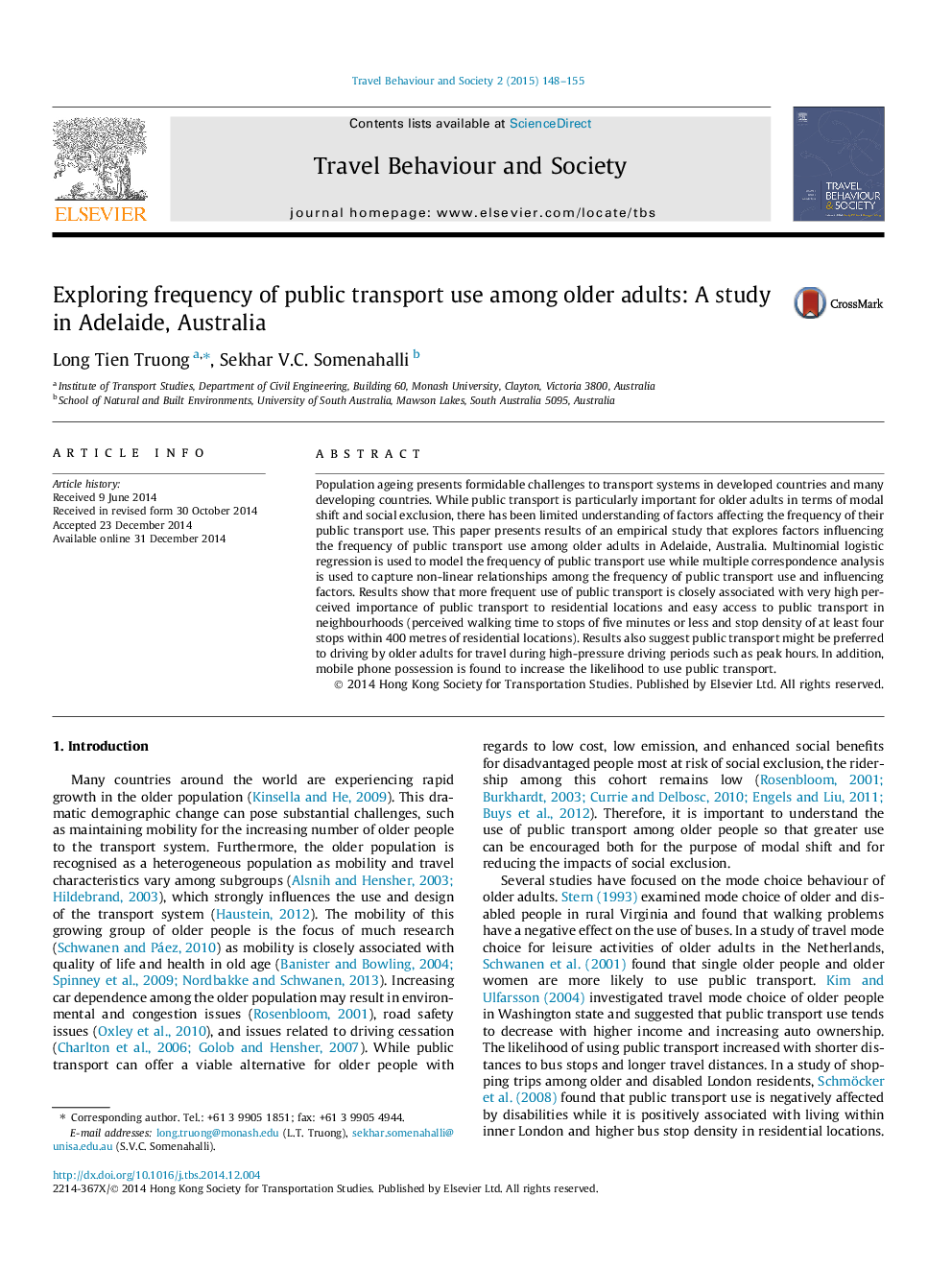| کد مقاله | کد نشریه | سال انتشار | مقاله انگلیسی | نسخه تمام متن |
|---|---|---|---|---|
| 141277 | 162848 | 2015 | 8 صفحه PDF | دانلود رایگان |
Population ageing presents formidable challenges to transport systems in developed countries and many developing countries. While public transport is particularly important for older adults in terms of modal shift and social exclusion, there has been limited understanding of factors affecting the frequency of their public transport use. This paper presents results of an empirical study that explores factors influencing the frequency of public transport use among older adults in Adelaide, Australia. Multinomial logistic regression is used to model the frequency of public transport use while multiple correspondence analysis is used to capture non-linear relationships among the frequency of public transport use and influencing factors. Results show that more frequent use of public transport is closely associated with very high perceived importance of public transport to residential locations and easy access to public transport in neighbourhoods (perceived walking time to stops of five minutes or less and stop density of at least four stops within 400 metres of residential locations). Results also suggest public transport might be preferred to driving by older adults for travel during high-pressure driving periods such as peak hours. In addition, mobile phone possession is found to increase the likelihood to use public transport.
Journal: Travel Behaviour and Society - Volume 2, Issue 3, September 2015, Pages 148–155
